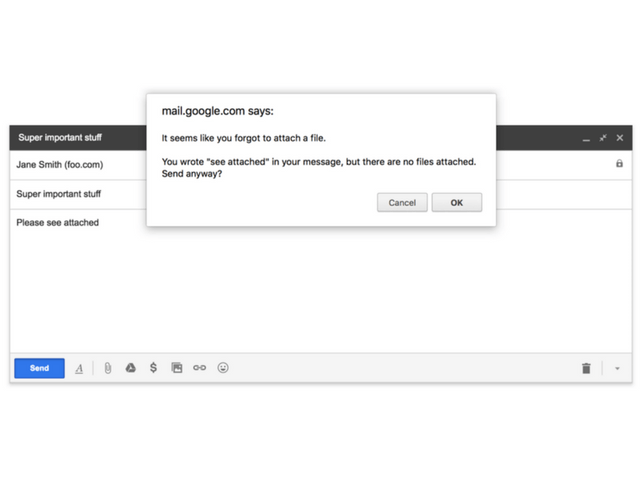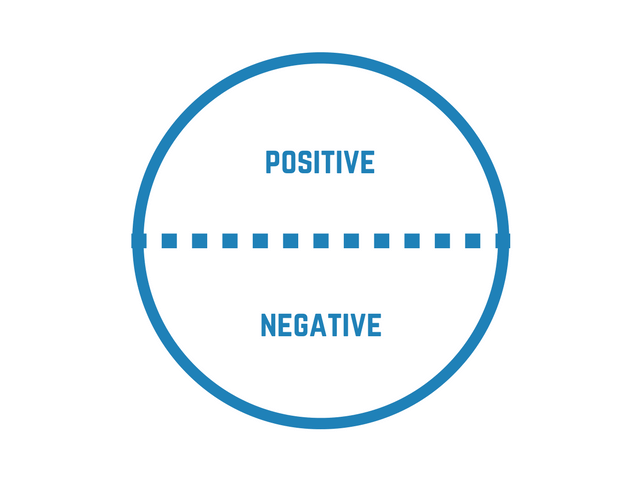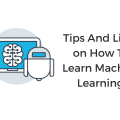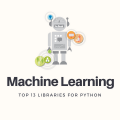7 Tips For the UX-Specialist for Working With Machine Learning
Machine Learning (ML) is an extensive subsection of artificial intelligence that studies methods of constructing algorithms that can be trained.
- Machine learning allows the computer to detect patterns and relationships in the data, so it’s an excellent tool for creating a personalized and dynamic UX. The scope of its application is wide: from the advisory mechanisms of Netflix to unmanned vehicles. The task of the UX-specialist when working on a project under ML control is to give the user control over the technology, and not vice versa.
- Machine learning gradually makes us rethink the approach to creating almost all products. In this article, we’ve gathered seven tips on how UX designers focus on the user’s needs when working with ML.
1. Identify the Problems that the Product Solves
Many companies decide to use machine learning, not quite realizing what problem their product should solve. Such an approach is acceptable in the conduct of research or in acquaintance with the capabilities of the new technology. In all other cases it is worth starting with understanding the needs of the user, otherwise, there is a risk of creating a powerful system for solving a minor or non-existent problem.
- Therefore, the first point is quite simple: machine learning can not determine what problems and tasks need to be solved.
You still have to do this hard work yourself.
- Ethnography,
- Contextual inquiries,
- Interviews,
- Polls,
- Reading of customer support applications,
- Log analysis and communication with users will help to find out if you understand the needs of users.
2. Find Out the Real Need for Machine Learning
Do not think that the very fact of using machine learning makes the product qualitative. There are many tasks that can be solved without using this complex technology. Therefore, your goal at this stage is to determine if there is a need for machine learning, whether it will help your product or will only harm it.

- If Gmail finds in a letter phrases such as “attachments”, then it checks to see if you forgot to attach the document. If there is no attachment, a reminder appears. The heuristic algorithm works well here. Machine learning with this task would have done better, but it would have been much more expensive.
We developed a set of exercises and give it to the teams when they decide to use machine learning. Exercises help you understand what thoughts and expectations arise when interacting with an ML system, and what data is needed to build it.
- Describe the way that a person can now solve your problem?
- If a person performed this task, what kind of feedback would help him improve the result? Answer this question for the four phases of the matrix of inaccuracies.
- If a person performed this task, what would the user want?
Answers to these questions should be discussed with the team and put on the basis of user research. After you finish working with exercises, sketches and storyboards, put all the ideas into the matrix:

- Put ideas in this matrix. Ask the team to vote for which ideas will have the greatest impact on the user, and which will benefit more from the ML application.
This will highlight the most effective ideas, and determine which of them are highly dependent on machine learning, and which can only slightly benefit from its application. Ideas from which to start will be in the upper right corner of the matrix. And if you have not yet attracted developers to the discussion, then it’s time to do it.
3. Test the Prototype Using Personal Data and Experiment
Working with ML-systems, you will inevitably encounter difficulties in prototyping. It is impossible to quickly create a realistic prototype if the main task of the product is to analyze unique user data. Also, it will not be possible to make significant changes in the design if, at the time of testing, the machine learning system is built into the product.
- When conducting user studies with the first prototypes, ask participants to share some personal data – for example, photos, contact lists, music recommendations or the films they receive. You need to inform the participants of how these data will be used during testing and when they will be deleted. Using these examples, you can simulate correct and incorrect system responses.
- For example, you can simulate the operation of a system that gives movie recommendations to a user. Note how the user will explain why the system produced exactly this result. This method will help you more than using fictitious examples or describing the product concept.
- An important condition for research – the user should think that he is interacting with an autonomous system. But in fact, his screen is controlled by a person who is familiar with the product (usually a member of the team). Its task is to simulate the actions of the ML-system: chat-bot answers, the offer of contacts for the call, the recommendation of the films. When a user interacts with what he perceives as an artificial intelligence, he creates a view of the system and corrects the behavior in accordance with them. Observation of this process is extremely important in our work.
4. Weigh the Costs of False-Positives and False-Negative Responses
Your system will be wrong. It is important to understand how these errors look in the eyes of users. In the second paragraph, we mentioned the matrix of inaccuracy: this key concept in machine learning describes the process when the system responds correctly or is mistaken.

For the ML system, all errors are equal, but people perceive them in different ways. Take for example the classifier “man or troll?”. The random classification of a person as a troll is simply a mistake of the system. She has no knowledge of the cultural aspect and she does not want to offend anyone. The system does not understand that the people she identified as trolls may be more insulted than trolls that were accidentally identified as people.
- In ML terms, you need to find a trade-off between the accuracy and completeness of the system.
5. Plan System Adaptation
The main value of using ML-systems is that they change themselves and change the user’s view of the product. The more a person interacts with the system, the more accurate the results will be. Help your users understand and stimulate them for feedback. This will be useful for them as well as for the product.
- The Gboard keyboard is evolving to predict the next word of the user. The more the user uses this feature, the better recommendations become.
When ML systems are trained on existing data sets, they will adapt to new data in ways we do not initially imagine. Therefore, we will have to adjust the user research and feedback strategy. This means that in the food cycle you need to plan ahead:
- Analysis of the user’s attitude to the product;
- Long-term research;
- Research with a wide coverage.
You should spend enough time evaluating the performance of the ML system by measuring accuracy and errors as the number of users increases. We also recommend that you monitor users to understand how they are affected by the system’s successes and failures.
- In addition, to improve the performance of the ML-system, you need to think about how to get feedback from users throughout the product’s life cycle. Interaction patterns that facilitate feedback, as well as quick reaction to it, make a good product great.
6. Teach your Algorithm Using the Correct Tags
Tags are an important aspect of machine learning. There are specialists who are reviewing tons of content and putting out the appropriate tags.
Difficulties arise when it comes to subjective assumptions.
- For example, whether the recommended article or the answer by e-mail will be useful to the user. Learning a model takes a long time, and getting a complete set of data can be too expensive. Therefore, improper use of tags can have a huge impact on the viability of your product.
So, here’s how it’s done. Start with reasonable assumptions and discuss them with colleagues. Usually it looks like this: “we assume that _________ users in situations ________ will prefer ________, not ________”. Based on the results of discussions, prepare a prototype as soon as possible in order to begin collecting feedback and proceeding with product development. Find experts who will become the best teachers for your ML-system. Make sure that they are competent in the area in which you will make predictions. We recommend hiring several people at once or for entrusting this role to someone from the team. In our team, we call these people “content specialists.”
- Together with you, they will create examples of AI work that will help form a plan for data collection and identify tags to start learning the system.
7. Expand the UX Command
Think about the worst remark you received from your superiors. And now imagine that someone is standing behind you and commenting on your every action. Keep this image in mind and make sure that you do not treat your developers this way.
- There are many ways to solve any ML problem. As a UX specialist, you have the right to your vision, but do not impose it on the developers. Trust their intuitions and let them experiment even if they do not dare to test the system on users before the evaluation system is ready.
Machine learning is a creative and expressive technical process. Training models can be slow, and there are not so many visualization tools, so developers often have to use their imagination when setting up the algorithm. There is a methodology called “active learning” where they manually “tune” the model after each iteration. Your task is to help them make a user-centered choice.
- For best results, collaborate with developers and the product team
So inspire them with examples – personal stories, videos, prototypes, user research results, cool projects, to show what a good UX should be. Work on their understanding of the goals of user research. Tell them about the methodologies that are used in the work so that they better understand the features of the device product and the purpose of UX. The earlier your colleagues learn your methods, the more reliable and effective the development process will be.
Conclusion
These are seven tips that we consider important in Google. We hope that they will be useful if you use machine learning when developing a product. Do not forget that this work requires people to be oriented, to find a unique value for them and to make every experience of interaction with the product truly admirable.





